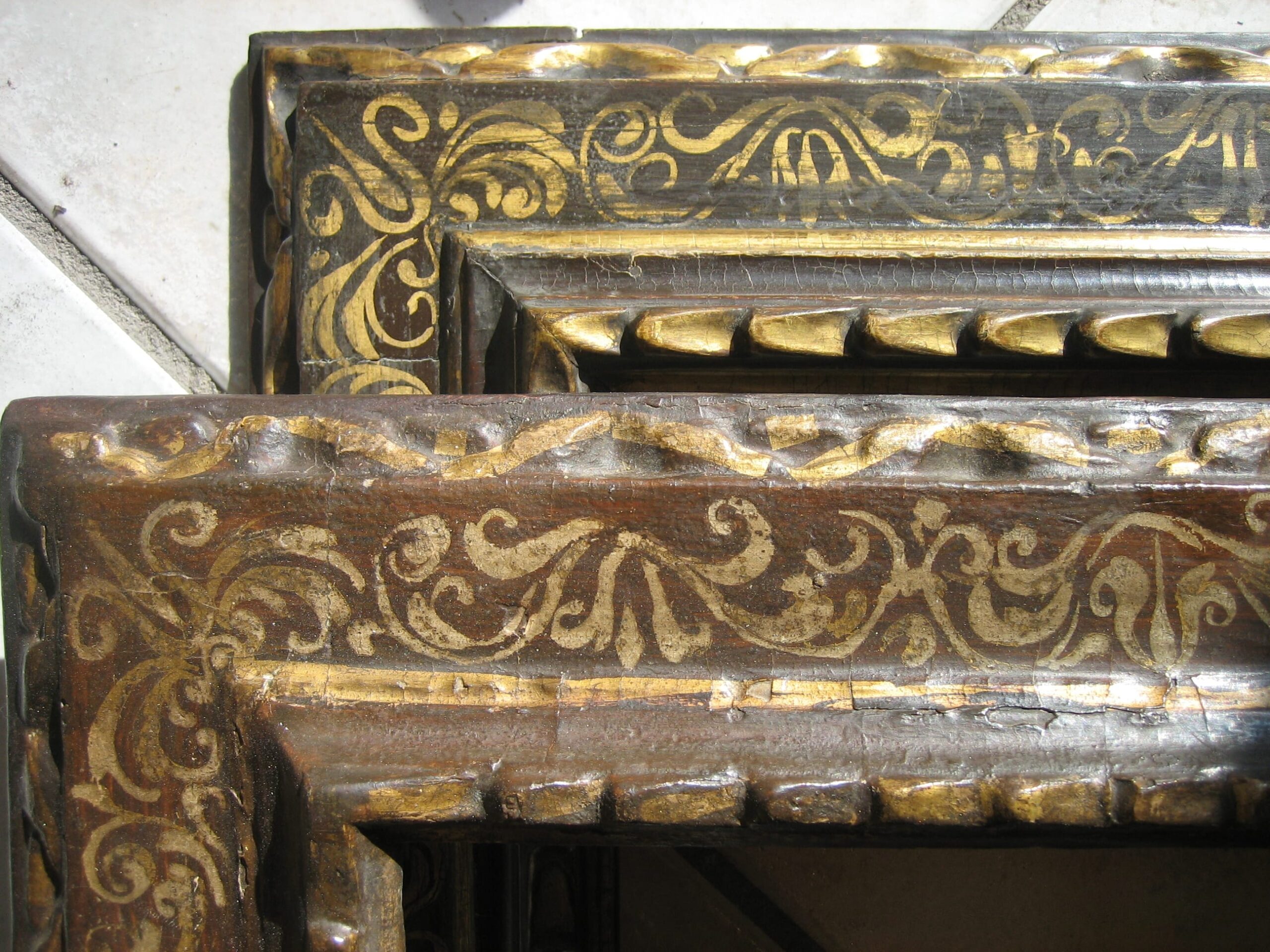Rely on an ANTIQUE REPLICA FRAMES SPECIALIST to bring historical authenticity and refined craftsmanship to your treasured artwork.
Ever looked at a magnificent painting or cherished heirloom and felt a simple, modern frame just wouldn’t do it justice? Many art lovers crave a frame that not only protects but also enhances the history behind their piece. As an ANTIQUE REPLICA FRAMES SPECIALIST, I create frames that merge historical charm with present-day quality. In this article, you’ll discover why these frames matter, how they’re made, and how to select the perfect style for your art and space.
Follow these steps for the best experience with antique replica frames:
- The Essence of Antique Replica Frames
- Choosing Authentic Materials and Methods
- Why Historical Accuracy Matters
- Customizing Frames for Your Artwork
- Perfectly Fitting Your Living Space
- Understanding Specialized Craftsmanship
- Ensuring Durability and Authentic Appeal
- Embracing the Significance of Past Eras
- Collaborating with an ANTIQUE REPLICA FRAMES SPECIALIST
These sections guide you from the basics of antique replica frames to working directly with a skilled artisan.
Keep reading to learn how each element—materials, techniques, and personal touches—comes together to create a frame that not only holds your artwork but amplifies its story.
1. The Essence of Antique Replica Frames
Antique replica frames do more than provide a border for your art; they reintroduce a slice of history into your home. By recreating the look and feel of frames from specific periods, these replica deliver a classic, old-world charm that’s hard to replicate with standard, off-the-shelf products. Think about a richly carved Baroque design or a subtle Neoclassical style—each has its unique flourishes that speak to the era it represents.
What distinguishes an antique replica frame from a typical modern frame is the detail. Intricate carvings, authentic gilding techniques, and an aged patina all come together to produce a piece that echoes centuries-old craftsmanship. A carefully chosen antique replica frame can elevate even a contemporary painting, juxtaposing past and present in a way that feels harmonious and visually striking.
Beyond aesthetics, there’s a deeper connection at play. When you select such a frame, you’re paying homage to the heritage of art display. Historically, frames were considered extensions of the artwork itself, crafted by specialized artisans who understood how to complement, rather than overshadow, the central piece. Today, continuing that tradition means acknowledging the timeless importance of detail, artistry, and respect for the original art form. Ultimately, an antique replica frame isn’t just a functional object; it’s a statement that weaves history into the fabric of modern life.
2. Choosing Authentic Materials and Methods
It’s easy to assume that any frame made of wood can be called a “replica,” but authenticity hinges on the materials and methods used. As an ANTIQUE REPLICA FRAMES SPECIALIST, the process begins with selecting wood types that artisans historically favored—species like limewood, poplar, or pine. These woods are chosen for their longevity and carvability, ensuring a stable base for decorative elements.
From there, natural adhesives, gesso, and bole layers become crucial for establishing the classic look. Gesso provides a smooth foundation, allowing detailed carvings or patterns to stand out. Bole—often colored clay—prepares the surface for gold or silver leaf, lending that iconic sheen to gilded frames. Hand-applied leafing methods further differentiate a truly antique-inspired frame from mass-produced alternatives, as skilled artists meticulously burnish and tone each layer to achieve an authentic finish.
Equally important are the techniques that lend an aged appearance. Subtle distressing, delicate scratches, and gentle oxidation replicate the gentle wear that original antique frames accrue over centuries. Rather than artificially faking damage, a specialist uses time-honored procedures to achieve a patina that feels natural, evoking the character and charm of an old piece. These foundational steps hold the key to ensuring the replica isn’t just visually compelling but also structurally sound, ready to protect your artwork for decades to come.
3. Why Historical Accuracy Matters
Many people wonder why it’s important to adhere so closely to period-accurate methods when crafting a replica frame. Isn’t it enough that the frame looks old? In truth, historical accuracy extends far beyond superficial appearance. By replicating old-world techniques, we honor the artisan traditions that gave these frames their longevity and distinct character. Even subtle aspects like the angle of carving cuts, the exact thickness of the gold leaf, or the type of finishing wax can influence the final impression.
Another key factor is the relationship between a historically accurate frame and the artwork it surrounds. Imagine placing a Renaissance-style painting into a frame that reflects the precise motifs and gilding methods from that era. The result feels cohesive, as if the painting and its frame were meant to be together from the start. This synergy does more than please the eye—it helps viewers step back in time, appreciating the art within the cultural context it was created.
Collectors and museums also place high value on authenticity. For them, the difference between a frame that’s just “inspired” by a certain period and one that truly embraces historical craftsmanship can significantly affect the overall perception of a piece. Accuracy goes hand in hand with respect, both for the original artists who created the style and for the modern-day collectors who wish to preserve it. Simply put, it’s about doing justice to each artwork’s story.
4. Customizing Frames for Your Artwork
Customization is where the magic really happens. Every piece of art has its own personality—be it a centuries-old portrait or a contemporary abstract—and finding a frame that highlights those unique qualities is essential. Rather than grabbing a standard design off a shelf, consider how the tones, subject, and style of your artwork might interact with carved flourishes, gilded edges, or subtle distressing.
A specialist will guide you through the process, offering advice on frame width, ornamentation, and color palette. Sometimes, the best choice is a heavily ornate frame that complements a bold painting. In other cases, a simplified design ensures attention remains fixed on the artwork itself. Either way, the ultimate goal is harmony: a frame that works with, not against, the art.
Additionally, small details can make a significant difference. For instance, you might opt for a fillet—a thin band inside the frame—if you want an extra accent of gold or silver. Or perhaps you need a particular hue of patina that echoes the background shades of your painting. By collaborating closely with an expert, you ensure each element of the frame contributes to the overall narrative of the artwork, creating an immersive viewing experience for anyone who stops to admire it.
5. Perfectly Fitting Your Living Space
While choosing a frame that suits your artwork is key, it’s equally important to consider the environment where the piece will be displayed. The right frame can tie together various elements of your room, from furniture style to wall color. Conversely, a mismatched frame may clash with your existing décor, detracting from both the artwork and the space as a whole.
If your home leans toward traditional design, an ornate, gilded frame might be a natural fit. Dark wood accents or regal draperies can harmonize with carved scrolls or floral patterns. On the other hand, a modern loft with sleek lines might call for a frame that introduces historical flair without overwhelming minimalistic furniture. In such a case, a simpler but authentically aged frame can bridge the gap between old and new.
Lighting conditions should also influence your decision. Gilded frames that catch natural light can add brightness to a dim room, while a soft matte finish may offer a quieter effect in a brightly lit space. This is where an ANTIQUE REPLICA FRAMES SPECIALIST can be invaluable, recommending the right combination of surface treatments, tones, and ornamental flourishes to create a cohesive, inviting atmosphere around your artwork.
6. Understanding Specialized Craftsmanship
Crafting antique replica frames is a highly specialized skill that demands both artistic flair and technical precision. Years of training go into mastering carving techniques, perfecting gold leaf application, and orchestrating the aging processes. Unlike mass-produced frames, which rely on automation and shortcuts, a specialist invests time in each step to produce a personalized outcome that genuinely reflects historical artistry.
One of the hallmarks of true expertise is the ability to pivot between different styles and eras. A single workshop might handle a regal Baroque frame one week and then shift to a more understated Renaissance design the next. This variety calls for a deep understanding of historical context, from the motifs popular in certain centuries to the specific finishes that convey an authentic sense of age.
Moreover, a skilled craftsman also acts as a consultant. They guide you through decisions like wood selection, gilding materials, and patina techniques, ensuring your frame not only looks the part but is also structurally durable. Their role is equal parts historian, artist, and engineer, balancing the aesthetic demands of your artwork with practical considerations that ensure the final piece stands the test of time. In this personalized approach, each frame tells a unique story—just as the original antique frames did when they were first created.
7. Ensuring Durability and Authentic Appeal
A crucial aspect of antique replica frames is their ability to remain both visually captivating and structurally stable for years to come. By sticking to historically accurate materials—like well-seasoned wood, traditional adhesives, and organic finishes—these frames naturally develop character without sacrificing integrity. Over time, the finish may reveal subtle changes in color or texture, echoing the graceful aging process of genuine antiques.
Durability is more than a cosmetic concern. Frames protect the artwork within, so they must withstand temperature fluctuations, humidity, and everyday handling. High-quality gesso layers, carefully applied leafing, and a sturdy wooden foundation all help ward off cracks, peeling, or warping. This meticulous approach to construction pays off: even as the frame ages, it remains reliable and functional, continuing to enhance your art.
Authentic details can also be maintained or refreshed with minimal effort. If a gold leaf edge needs re-burnishing or a corner shows signs of wear, a skilled artisan can restore it without compromising the overall authenticity. This ease of maintenance means your investment not only retains its charm but can also evolve elegantly over the decades, preserving both your art and the sense of history its frame provides.
8. Embracing the Significance of Past Eras
One of the greatest joys of antique replica frames lies in celebrating the history they represent. Each style—be it Gothic, Baroque, Rococo, or Neoclassical—embodies the artistic values of its time. When you choose a frame reflective of a specific era, you’re doing more than matching aesthetics; you’re paying homage to the cultural and artistic movements that shaped our collective past.
For period artwork, this becomes even more meaningful. A painting created during the 18th century often carries the themes, colors, and techniques prevalent at that time. Housing it in a correspondingly styled frame allows the piece to be viewed as it might have been originally intended, enriching the viewer’s appreciation of its historical context. Even modern works can benefit from this approach, creating a fascinating interplay between today’s artistic vision and yesterday’s ornate design.
Collectors who value authenticity and storytelling find that antique replica frames deepen their connection to each piece. Beyond mere decoration, these frames act as historical ambassadors, offering a window into the cultural background that influenced the artwork. This layered experience transforms a simple display into a richer narrative, connecting you—and anyone who views the piece—to a bygone era.
9. Collaborating with an ANTIQUE REPLICA FRAMES SPECIALIST
Working closely with an ANTIQUE REPLICA FRAMES SPECIALIST can transform the whole experience of acquiring a frame into an artistic journey. Rather than a quick transaction, you’ll enjoy an in-depth process that respects both your preferences and the artwork’s inherent style. The specialist will likely begin by examining the piece you want to frame, discussing its historical period, color palette, and any unique features.
From there, you’ll explore wood samples, finishes, and ornamentation options. This consultation phase ensures that every element—from the depth of the carvings to the type of patina—aligns with your vision. You might receive sketches or photos of sample frames, giving you a clear preview before work begins. Throughout the crafting process, many artisans provide updates, allowing for small adjustments if your tastes or needs evolve.
Ultimately, the collaborative nature of this process ensures a deeply personalized result. You walk away with a frame that isn’t just “close enough” but truly reflects your taste, the spirit of the artwork, and the historical era you wish to honor. In essence, this partnership combines your passion for art with the expertise of a specialist, culminating in a one-of-a-kind frame that stands as a testament to art’s enduring legacy.
FAQ
Are antique replica frames more expensive than regular frames?
They can be, but the artistry, authentic materials, and historical accuracy offer lasting value.
How do I pick the right frame style for my artwork?
Look at the artwork’s era and mood. A specialist can recommend a style that naturally complements it.
Will these frames need special care over time?
They age gracefully with basic care. Occasional touch-ups or gentle cleaning keeps them looking their best.
Can I ship a large antique replica frame internationally?
Yes, with proper packaging and insurance, international shipping is feasible for most frame sizes.
Is it possible to customize every aspect of the frame?
Absolutely. Collaborating with a specialist means you can specify wood type, ornamentation, finish, and more.
Conclusion
An ANTIQUE REPLICA FRAMES SPECIALIST offers more than a simple solution for displaying your art—they provide a living bridge between history and your home. By employing period-accurate materials and time-honored methods, these frames transcend basic functionality to become integral parts of your artwork’s narrative. Whether you’re preserving an heirloom painting or adding vintage flair to a modern piece, antique replica frames infuse each display with authenticity and timeless allure. Ultimately, investing in such craftsmanship is about honoring both the past and the value of art today, ensuring your treasured pieces remain vibrant and appreciated for generations.





